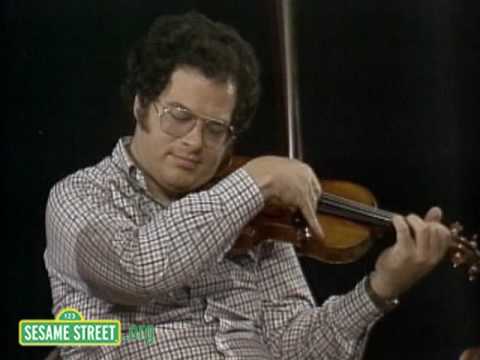Pamela Hovland told us an amazing story she had heard about the great violinist Itzhak Perlman, and forwarded a version that she found online:
Childhood polio left Isaac Perlman able to walk only with braces on both legs and crutches. When Perlman plays at a concert, the journey from the wings to the center of the stage is long and slow. Yet, when he plays, his talent transcends any thought of physical challenge.
Perlman was scheduled to play a difficult, challenging violin concerto. In the middle of the performance one of the strings on his violin snapped with a rifle-like popping noise that filled the entire auditorium. The orchestra immediately stopped playing and the audience held its collective breath. The assumption was he would have to put on his braces, pick up his crutches, and leave the stage. Either that or someone would have to come out with another string or replace the violin. After a brief pause, Perlman set his violin under his chin and signaled to the conductor to begin.
One person in the audience reported what happened: “I know it is impossible to play a violin concerto with only three strings. I know that and so do you, but that night, Isaac Perlman refused to know it. You could see him modulating, changing, and recomposing in his head. At one point it sounded as if he were re-tuning the strings to get a new sound that had never been heard before. When he finished, there was an awesome silence that filled the room. Then people rose and cheered. Perlman smiled, wiped his brow, and raised the bow of his violin to quiet them. He spoke, not boastfully, but quietly in a pensive tone, ‘You know, sometimes it is the artist’s task to find out how much music you can still make with what you have left.”
It is an astonishing story, with a very real message, and one we could believe of Perlman. Although it was published in the Houston Chronicle in 2001 (in a more embellished form), it’s first appearance in print appears to have been in Rabbi Wayne Dosick’s 1999 book, When Life Hurts: A Personal Journey from Adversity to Renewal (the excerpt, above). There seems, however, to be no proof that Perlman’s brilliant improvisation actually happened. The website Snopes, which researches urban legends, makes the argument, with footnotes, that it probably didn’t. We haven’t gotten to the bottom of it yet, but…
…We’re wondering if it matters if it didn’t actually happen this way? Do we discard its meaning – which we know to be TRUE, and have evidence of in endless other ways – because the actual events are in question?
Thanks again Pamela!





Great story, even though I suspect it isn’t true. True story: Jimi Hendrix played a blistering rendition of “Red House” at Woodstock with a broken string. Of course, on a guitar, it is usually the high E string that breaks; a very important string for playing solos, and this song is nothing but solos. Regarding musical talent, I’d say that Hendrix and Perlman are pretty close…I’d probably give Hendrix the edge 🙂
Your interesting comment sent us look at YouTube videos for Henrix’s performance of Red House at Woodstock, as well as mention of the broken string in commentary. On both of these two videos, we are hardpressed to see the broken string, or see a missing one, though the images aren’t that clear. Some of the reporting we read said that the string broke at the end of the Red House. Take a look and tell us what you think, or tell us where you learned about it, how you know it’s true…
http://www.youtube.com/watch?v=WnsFzweKdWA
http://www.youtube.com/watch?v=WnsFzweKdWA
No matter what, it is a totally beautiful and artful piece.
there are some people whose soul’s inspire us, i think itzack perlman’s is one of them. perhaps it happened but he is the kind of guy you can imagine doing that. has anyone ever thought of asking him? suzy lowinger
I don’t actually care if the stroy is true or not, what I really care about is that somewhere, someone had the insight to tell it. The message is priceless and perfect. What do you do when your plans go awry? Do you throw in the towel? Do you cry and whine like a child? Or do you take what is left and finish the task, and if you are Very Clever… you finish it with Style.
The story is apocryphal. Write one, instead, about a kayaker who lost his paddle or a skydiver whose chute didn’t open. Write about a bicyclist whose pedal came off, or about the Miracle on the Hudson.
The copy states that the story may not be true. Nevertheless, the lesson in it is a great one, and echoed over and over by very true stories all through Improvised Life, including a number from our editorial assistant Mira Keras, like this one and this one. For a start, if you type “obstacle” in the Search Box, you’ll find quite a few examples; they represent only a sampling of what’s in our archive.
Who the damned we’ll ask for SNOPES NEGATIVE input⁉️
I know it’s TRUE, so go fly a kite ???? Snopes.
Take the MORAL of the Story and LEARN from it ???????? ????
Be well, my friends ????